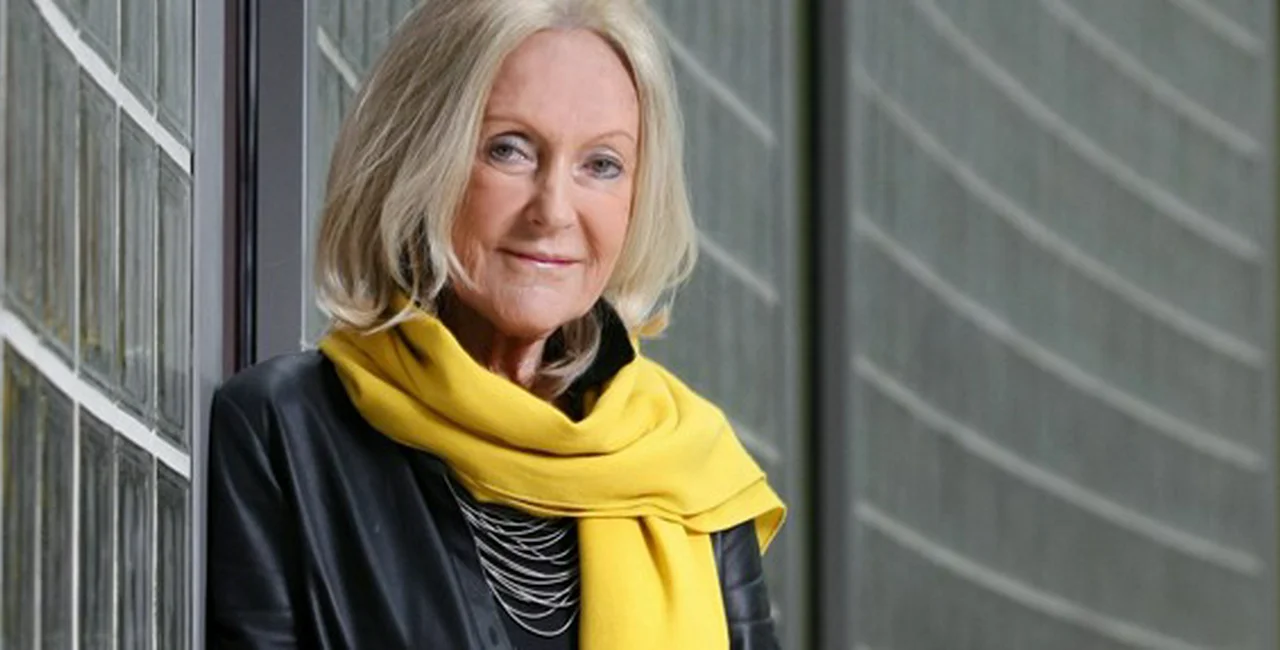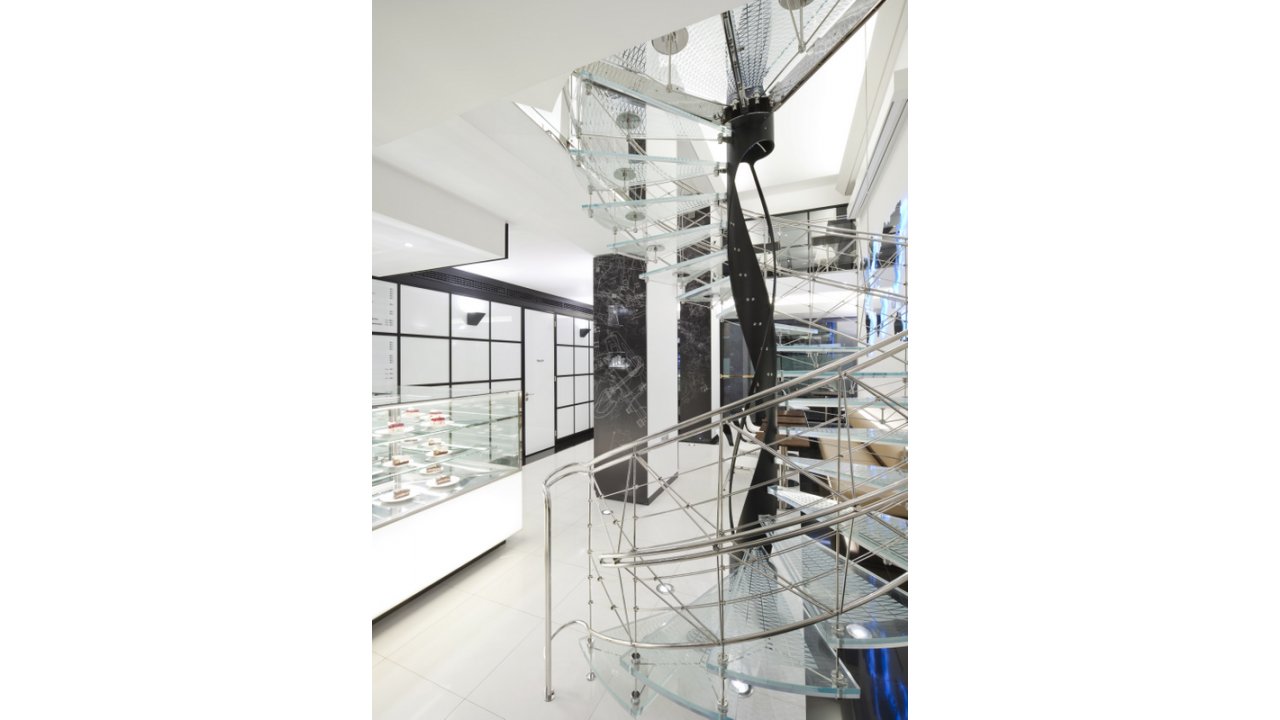London-based Czech architect Eva Jiřičná was recently awarded the 2013 Jane Drew Prize for her “outstanding contribution to women in architecture”. Jiřičná doesn’t require much introduction, as she is the Czech Republic’s most famous architect next to her friend and colleague, the late Jan Kaplický. Expats.cz sat down with Jiřičná in her Prague office – AI Design – to talk about the award, her work, the story of her emigration to the UK in 1968, her life today and her thoughts about Kaplický and his National Library project.
What does winning this award mean for you? How does it make you feel?
Old [laughs], is the answer. It’s a very kind of complex reaction in one’s mind. Because I’m so old I actually met Jane Drew when I first came to England. Jane Drew was a very famous architect in 1968 when I came to London and she was the president of the council of the school of architecture called the Architectural Association. She was the first woman president of this school and, I don’t how many years later – 40 years I think – I happened to serve in the same position; I think I finished about five years ago. Jane had a difficult situation because at that time private schools had difficulties obtaining sufficient financial support because students had to pay their fees, so they were very selective. So it was 1968, it was the first generation of people who grew up after the war and so they somehow rejected everything that seemed to be old. So this Architectural Association started suddenly to look a little bit old and they didn’t have enough students and Jane I think was probably brought in to somehow boost the confidence of the school because she was becoming famous.
Also she represented a generation of prewar modernists who I was very close to because my father was actually born the same year as her and he was an architect. It was a generation who wanted to change the world, who wanted to stop the wars and wanted to improve living conditions for people who never had a chance in life. It was a generation with very strong social principles, so this woman represented for me all that I knew from my own family background, from my own background as a student in Czechoslovakia. And secondly, I think [the award] is also kind of recognition of a foreign person who, like me, has spent most of their professional life [abroad]. So I think they are two very kind of [connected] streams which mix up in your head and so I think humble, gratitude is probably the summary [about how I feel about winning this award].
The Jury unanimously chose you “for [your] outstanding contribution to the status of women in architecture.” What do you think is the status of women in architecture today?
Well, I grew up in an environment where there were practically no women architects and I got used to it and took it as a matter of course. And I always tried to do what I could do best and if I was not successful – by not getting a contract for example – I always blamed it on my lack of ability but I never really considered that I would have been treated badly merely because I was a woman. So I never associated lack of success – a lost competition or whatever– with my being a woman. But of course initially I worked with men – we didn’t have women in the office when I worked at Richard Rogers and when I worked at other offices there were no women architects. I just somehow didn’t pay much attention to the fact, but when I started my own office I came across clients who told me that they didn’t want a woman to work on their projects. Also, then I started teaching and I recognized that in my time, the ratio of women in architecture was extremely low and now the ratio of women in architecture is very high but very few of them remain in the same profession. And so then you just start thinking, what is it – what causes this kind of discrepancy? And so you start noticing that, well, there are two things, I think that first of all it’s not a natural choice for women to select architecture because there are two parts of architecture one of them is semi-artistic or kind of design, which is done from a drawing board with a team of people who you work with and I think women are very good on that level. But when you come to the site and you actually have to start working with people and clients – clients who require women to go to pubs and football matches and so on –naturally there is a kind of separation point due to a lack of common interests. And also you have to start working with building contractors and go to factories and start collaborating with people who generally have a lack of confidence in women because they think women are not interested in the technical aspects. In my case I think I absolutely adore working with people in this field of what I call the process of how to make the building. Women have to learn how to work with people who are sometimes not terribly nice, who sometimes don’t use the nicest language but as a matter of fact they usually have their heart in the right place and they could really become your best friend if you learn how to handle it. I think it takes a period of time.
I think in these days architects are not playing the role of a single person holding the reins, architects are part of a big team and I think women are very good team workers. So in my little speech which I had to give after receiving the prize, when I was writing it on Saturday evening I turned the radio on and there was a very famous conductor and he was saying what it meant for him when women where introduced to playing in the orchestra. He had a long speech saying what women can do and what men can do and then he said at the end of it, women brought a very important emotional dimension into the orchestra and secondly, I’ll just repeat his words, ‘And they are bloody good players’. And that is it, because the emotional understanding of what architecture is all about this is why Jane Drew, because of her emotional understanding of the necessity of architecture and it’s influence on those who were poor, in trouble financially, I think that is really something which is extremely important to bear in mind. Of course at this age we [women architects in the later part of their careers] are being taken a little bit more seriously then when you are thirty years old. You just learn how to handle it because you are doing it for love of the field you have chosen. So if you love what you do, you don’t mind so much if someone shouts at you or tells you, you are a complete idiot because you don’t understand how the electrical cable gets from A to B [laughing].
How do you divide your time between London and Prague? Are you in Prague every week?
I would love to be in Prague every week but because we’ve got all kinds of jobs which are not either in London or Prague – for example, we’ve got a job in Monaco, New York; we had a job in Tel Aviv, we’re working on a house in South France and other projects in the Czech Republic besides Prague and so on – so I think I am traveling a great deal. And also, I think with age you start taking on all those public roles – teaching, giving lectures, sitting on a committee, judging a competition. So I am probably in my London office more than my Prague office. I’m in Prague basically every two weeks for two or three days. In terms of the work, the Prague and London offices are two completely separate offices. However, we sometimes help each other so sometimes we do need part of the project in London and vice versa.
What are your thoughts about the current state of Czech architecture – for example, is there good work being done, is there a lot of room for improvement?
I think that generally speaking there is a lot of room for improvement in any country in the world in any architectural practice and even the best architects or the architects who are most famous still have room for improvement, there’s always room for improvement in whatever you do. In this country, it is over twenty years since the revolution. Initially there was a complete gap because the architects really started from scratch and of course there was a generation of architects who were in their forties and fifties who never had a chance to do anything and then suddenly the chance came. And of course you learn in life from mistakes that you have made so if you made no projects you haven’t made many mistakes so you are really still on the level of an inexperienced person. And of course they were catching up but also there were a great deal of really bad developers who were trying to use the architects because they were cheaper and they tried to introduce this very strong commercial context which can spoil any architect, which I think is very unfortunate.
On the other hand there is the young generation and they are – I spent 13 years in Prague teaching at the University of Applied Arts – there is a tremendous amount of talent around. They’ve got the ability to travel, they have everything my generation missed, the generation that grew up during communism. The young generation has great opportunities. Some of them have started winning competitions and I’ve got three students at the moment working in the London office because we always have Czech students and Czech architects working in our office. Petr [Petr Vagner – who leads the Prague practiced – AI Design – along with Jiřičná] was one of them. He came to work in London before he did his diploma project. Then he came back and got married and we started working together. Then we started this firm about thirteen or fourteen years ago. I think young Czech architects and students are very hard working, they’re ambitious and talented, so I really do have a great deal of expectations based on my experience of working with young people.
Can you tell me about one or two projects that you’re currently working on?
We have been trying to keep a particular project moving forward, which is an extension of a 1970’s hospital in Plzen. This project is to be done for the foundation of Dr. Koza, who brought to Czechoslovakia the bone marrow transplant procedure. He started his foundation in the early 1990s. Through his skill, tremendous sacrifice and abilities, he got enough money to pay for the project. The project is meant to happen on the roof of the existing building, which is a really ugly building, but I have such admiration for this guy. He died last year and passed his legacy onto a team of people who are willing and determined to get the project built, so hopefully it will happen even though at the moment there seems to be some resistance from the hospital management. The second project is a private house in Troja, which is just about to be finished. And in Zlín, the town where I was born, we are doing our third big building, which is the Faculty of Humanities.
Of your existing projects, are there any in particular that you feel extremely satisfied with?
It has never happened to me [laughs]. I used to have a boss when I was very young – in my early thirties – and he used to say ‘if I am ever happy with what I have done, it’s a sign that I should retire [laughs]’. I don’t have any intention to retire unless I have to because the one up there [she points upward] decides that for me, but really, I have never been totally happy with anything. Some projects are better and some are worse, but total satisfaction I really have not experienced because I’m always critical and because it’s always like a driving wheel pushing you to start on a new project.
Lead photo: Matěj Slavík, Hospodářské noviny
Related articles
Financial Reporting & Analysis Specialist













 Reading time: 10 minutes
Reading time: 10 minutes 














 Danish
Danish
 Slovenian
Slovenian
 Swedish
Swedish
 Norwegian
Norwegian
 Finnish
Finnish
 Polish
Polish



















